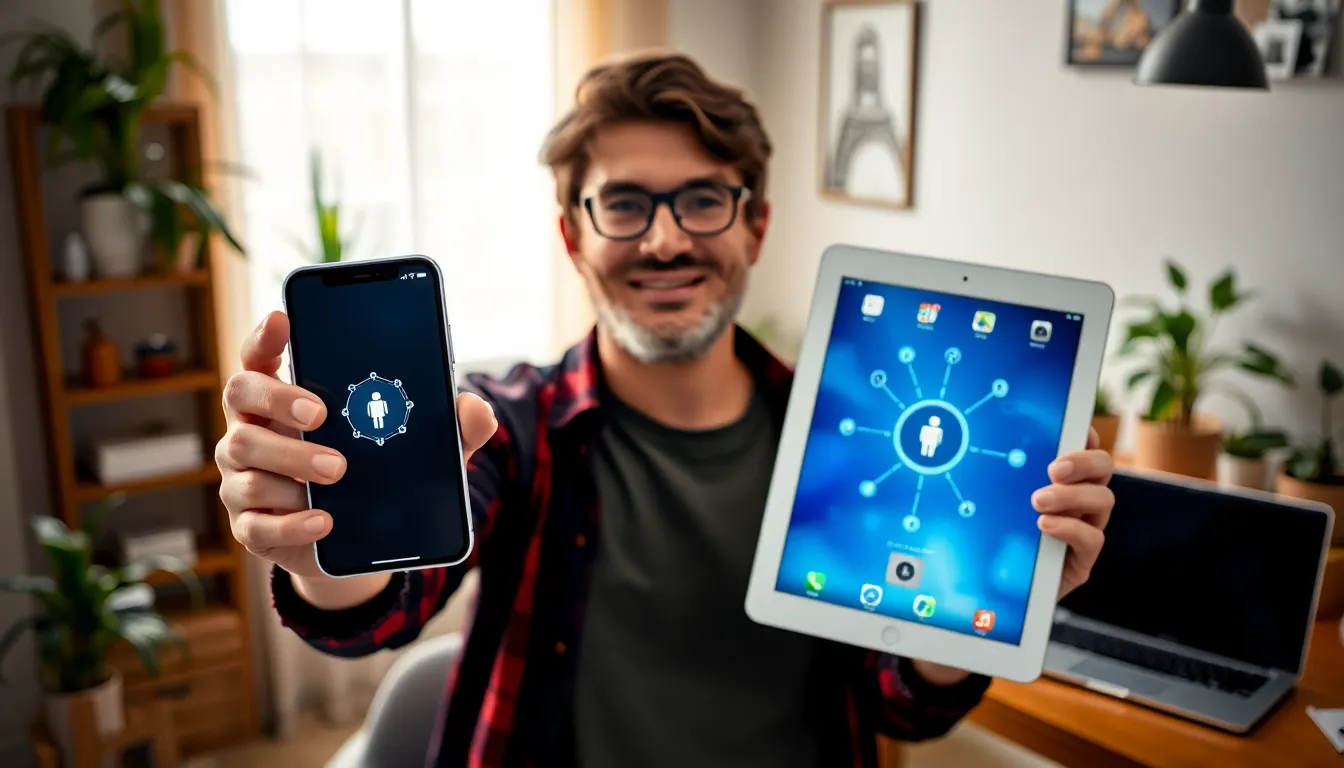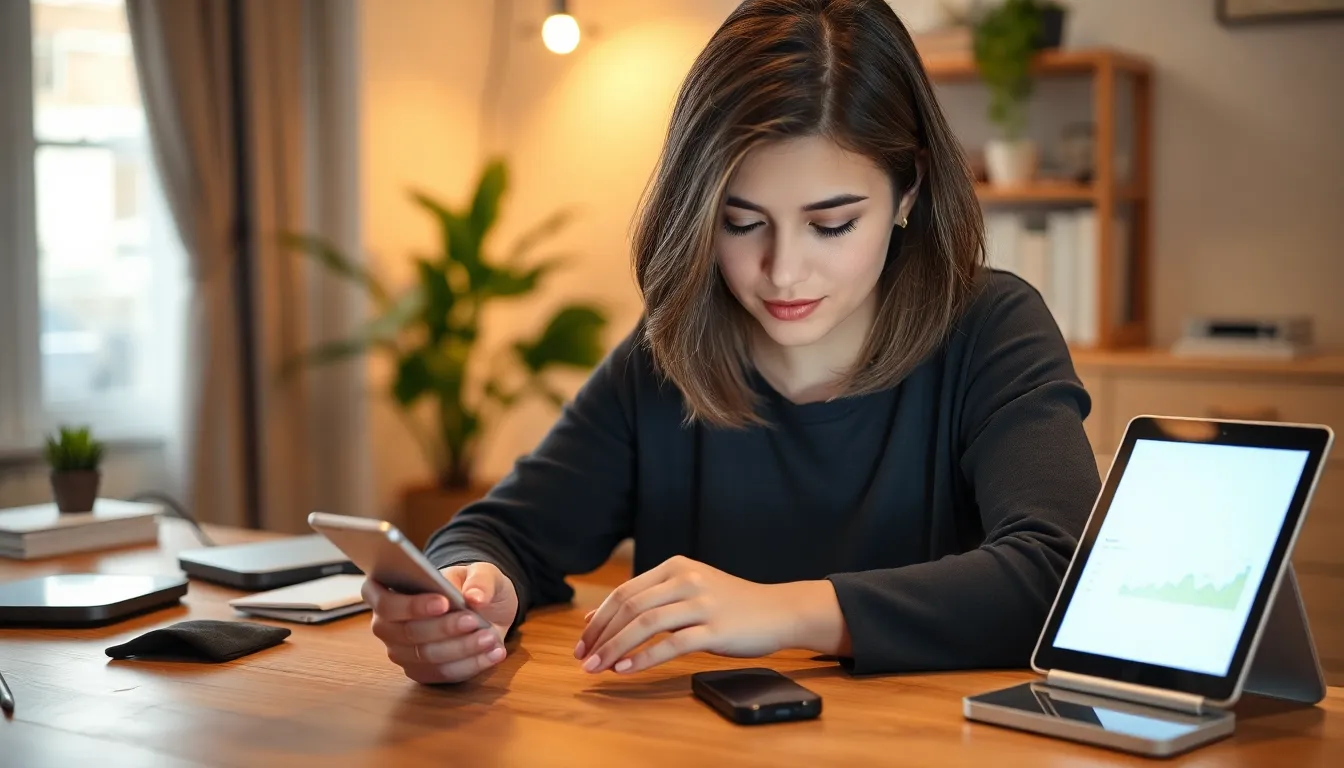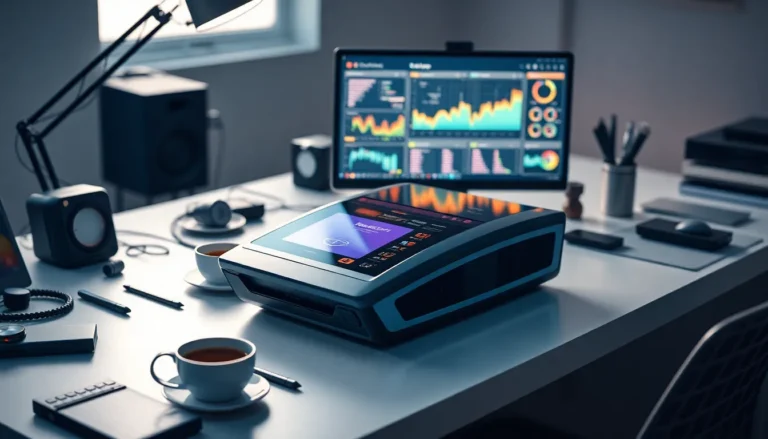In a world where multitasking is the name of the game, connecting an iPhone to an iPad can feel like trying to find a needle in a haystack. But fear not! This tech-savvy duo is about to become your new power couple. Imagine seamlessly sharing files, messages, and even your favorite memes between devices with just a few taps.
Table of Contents
ToggleOverview of Connecting iPhone with iPad
Connecting an iPhone with an iPad offers numerous benefits, simplifying tasks and improving productivity. Users can quickly share files, photos, and apps across devices. It enhances multitasking by enabling easy access to contacts and messages.
Several methods exist for this connection. AirDrop stands out as a popular choice for transferring files wirelessly. By enabling Wi-Fi and Bluetooth on both devices, users can share content effortlessly. Another option includes using iCloud, which syncs data across devices, such as notes and documents. Apple ID plays a vital role in ensuring seamless access to shared content.
Using Handoff allows individuals to start a task on one device and continue on the other. This feature works with compatible apps like Mail and Safari. For users who value continuity, enabling Handoff enhances their workflow significantly.
Additionally, users can connect devices through a USB cable for quick data transfers. Connecting to a computer and using iTunes facilitates the transfer of music, videos, and backups.
Battery sharing is another practical capability. Users can enable the Personal Hotspot feature, letting the iPad utilize the iPhone’s cellular data connection. This is particularly useful when Wi-Fi is unavailable.
Connecting an iPhone to an iPad is seamless and efficient, making it a valuable skill for maximizing device interoperability. Familiarity with these methods will provide users the tools needed for a more integrated digital experience.
Methods to Connect iPhone with iPad

Connecting an iPhone to an iPad can enhance productivity and streamline tasks. Several effective methods exist for establishing this connection.
Using Bluetooth
To use Bluetooth, both devices must have Bluetooth enabled. Start by opening the Settings app on both devices. Tap on Bluetooth and toggle it on. Next, wait for the iPhone and iPad to recognize each other in the list of available devices. Select the device name on one device, and a pairing request will appear. Accept the pairing request, and connection is established. This method facilitates sharing contacts and files directly between devices wirelessly.
Using Wi-Fi
Using Wi-Fi offers faster transfer speeds. Both devices should connect to the same Wi-Fi network. Open the Settings app and navigate to Wi-Fi. Ensure the Wi-Fi is turned on and connected on both devices. Apps like iCloud Drive or third-party apps provide options for sharing documents and photos seamlessly. Sharing within the same network allows users to transfer larger files with minimal delay.
Using AirDrop
AirDrop simplifies file sharing by using both Wi-Fi and Bluetooth. First, ensure AirDrop is enabled on both devices within the Control Center. Users can choose between receiving options like Contacts Only or Everyone for broader sharing. To share a file, select the file and tap the Share button, then choose the receiving device from the AirDrop section. This method allows for quick and easy sharing of photos, documents, and more without the need for cables or additional apps.
Setting Up iCloud for Seamless Connection
Establishing an iCloud account is vital for connecting an iPhone and iPad.
Creating an iCloud Account
Creating an iCloud account starts with opening Settings on the device. Users tap on their name or sign in with their Apple ID. A prompt for creating a new account appears for new users. After inputting the required details, verification occurs through email or phone. This process ensures account security. Once registered, users gain access to iCloud services, such as file sharing and backup options. Each device can utilize the same iCloud account, promoting easy access to shared information. Specific settings can be adjusted to enhance the synchronization experience.
Syncing Data Across Devices
Syncing data across devices involves enabling iCloud Drive for file access. Users navigate to Settings, select their Apple ID, then tap iCloud to manage settings. Enabling relevant options allows automatic syncing for photos, notes, and contacts. Changes made on one device reflect on the other almost instantly. For instance, when a photo is added on the iPhone, it appears on the iPad. This seamless integration results in a consistent user experience. Furthermore, apps that support iCloud enhance data sharing, making collaboration easier across devices. Utilizing iCloud optimizes productivity and efficiency across the Apple ecosystem.
Troubleshooting Connection Issues
Ensuring a stable connection between an iPhone and iPad can sometimes pose challenges. Restarting both devices often resolves minor connectivity problems. Checking if both devices are running the latest iOS version is also crucial. Outdated software can hinder compatibility and performance.
Confirming Bluetooth is enabled on both devices may help when using that method for sharing. If the devices don’t pair, forgetting the device in the Bluetooth settings and re-pairing can resolve the issue. On the other hand, when utilizing Wi-Fi, ensuring both devices are connected to the same network is essential for seamless file transfers.
Verifying iCloud settings can also prevent syncing issues. Having the same Apple ID signed in on both devices enhances synchronization. If iCloud Drive isn’t functioning, toggling it off and on can refresh the connection.
In some instances, ensuring AirDrop is set to “Contacts Only” or “Everyone” can resolve file-sharing glitches. Disabling restrictions on AirDrop in the receiving device’s settings can further improve connectivity.
Physical conditions may affect connections as well. Proximity plays a significant role; keeping devices close can enhance performance for features like AirDrop. If connectivity problems persist, resetting network settings on either device can provide a fresh start. Users should remember that this action will erase saved Wi-Fi networks and passwords.
When using USB for direct connections, checking the cable and port for damage is necessary. A faulty cable can impede data transfer. If connection issues continue, contacting Apple Support for more detailed troubleshooting may be beneficial.
Connecting an iPhone to an iPad opens up a world of convenience and efficiency. By mastering the various methods available users can enhance their productivity and streamline their digital tasks. Whether using AirDrop for quick file sharing or iCloud for seamless data synchronization the benefits are clear.
Troubleshooting connection issues is also manageable with simple steps to ensure both devices communicate effectively. This integration not only simplifies everyday tasks but also enriches the overall Apple experience. Embracing these connection techniques allows users to fully leverage the capabilities of their devices and enjoy a more connected lifestyle.




